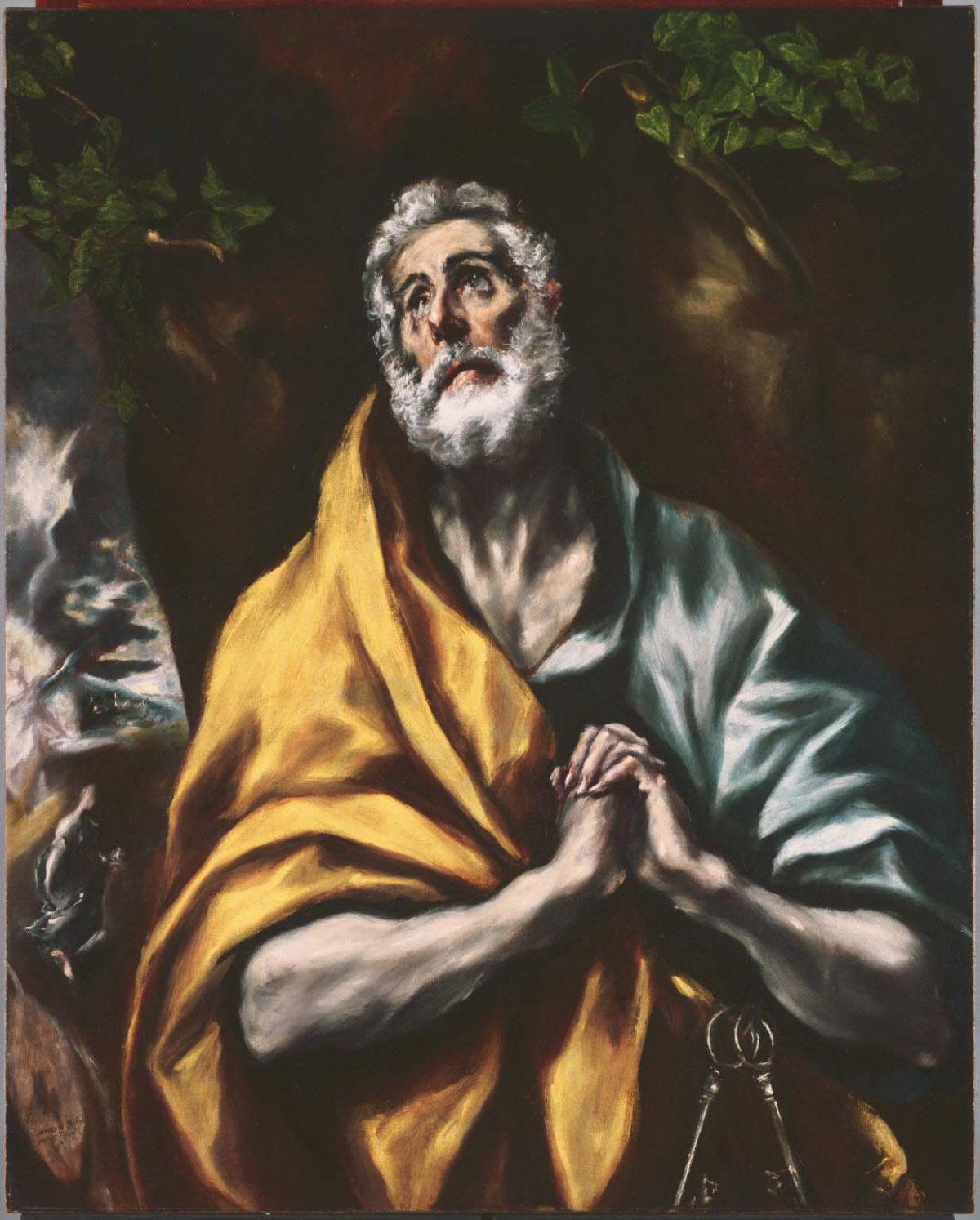The Repentant St. Peter
El Greco ( 1600 - 1605 or later )

Domenikos Theotokopoulos (El Greco) was born in Candia (Iráklion), Crete, in 1541, but little is known about his early life. He took up his vocation as a painter in Crete but around 1568 was in Venice, where he evidently studied the works of Jacopo Bassano, Tintoretto, Titian, and Veronese. Arriving in Rome in 1570, he became part of a circle of learned churchmen and other notables who shared an interest in the classics, literature, and art. El Greco left for Spain in 1577, possibly in the hope of obtaining more commissions than he had received in Italy. He seems to have pinned his hopes on Phillip II, who was recruiting painters for the decoration of the Escorial palace near Madrid. Although rejected as a court artist, he secured commissions in Toledo, and took up permanent residence there, becoming a citizen in 1589. He developed a highly original style characterized by the elongation of the human figure and flickering brushwork, and he painted mostly for churches and religious orders in and around Toledo, notably the masterpiece, The Burial of the Count of Orgaz.
Recalling the traditions of Byzantine icon painting, El Greco adopted a close-up view, thereby charging The Repentant Saint Peter with great feeling. Significantly, El Greco figured in Duncan Phillips’s attempt to employ baroque as a critical rather than a chronological category: “It is possible to be classic or romantic, realist or abstractionist, impressionist or expressionist in a baroque way.” While recognizing the importance of El Greco’s stylistic innovations for modern artists, Phillips maintained that El Greco’s plastic means were in the service of the artist’s own inner life, invoking another twentieth-century notion as he claimed El Greco for expressionism. Phillips insisted that El Greco’s emotional expression was ultimately submerged into a classical feeling for order: “As for El Greco, where in the history of art is there a better example of that search for unity and integration which the romantic artist requires to make his passionate utterance intelligible?”
